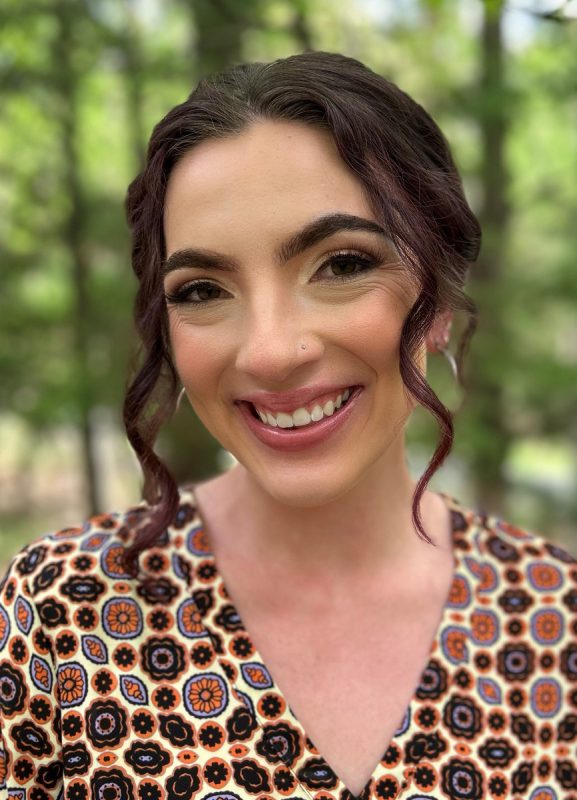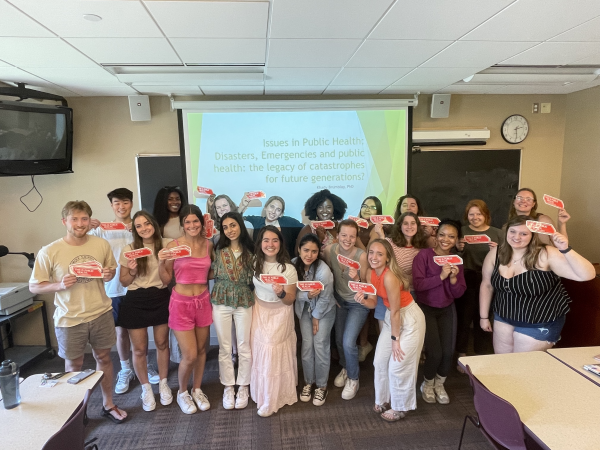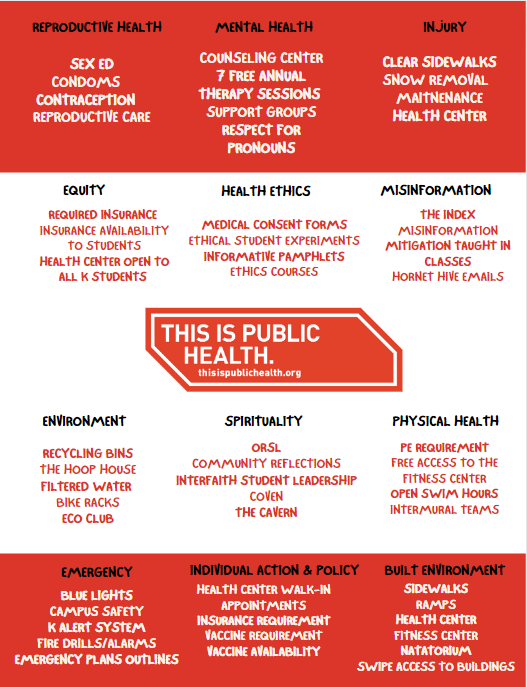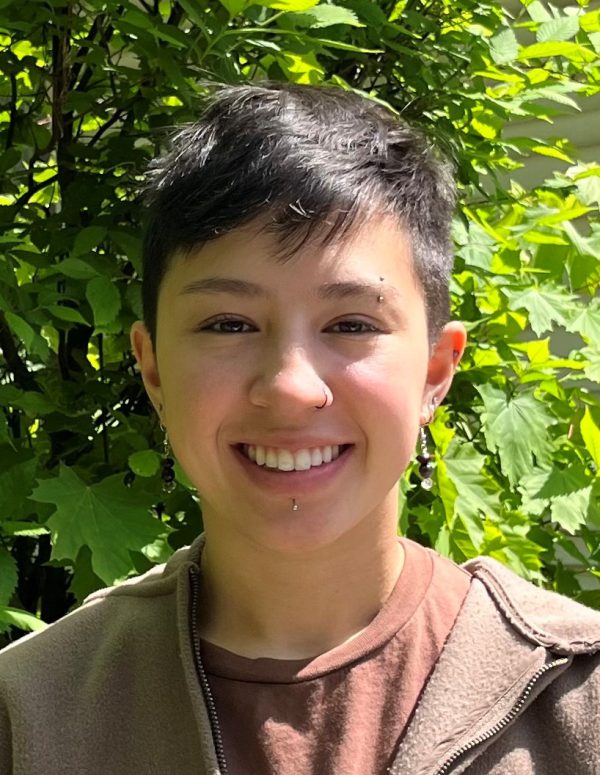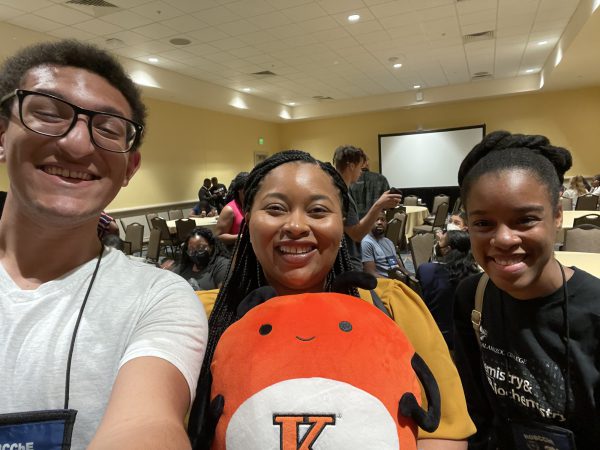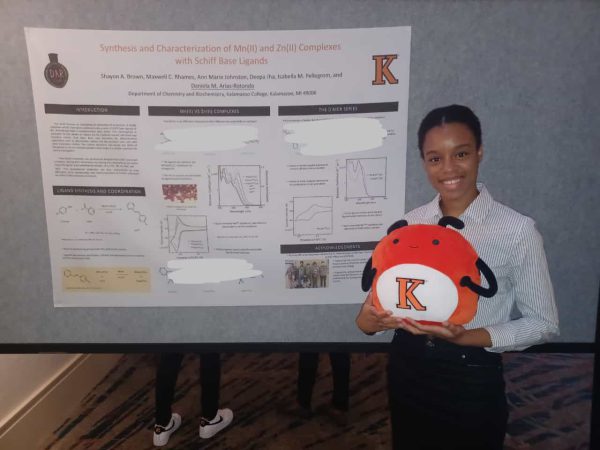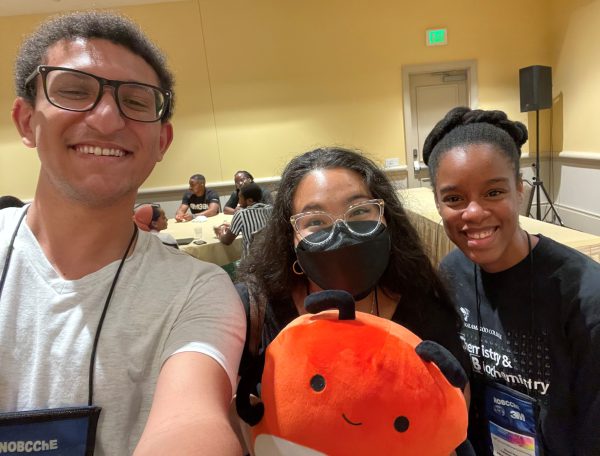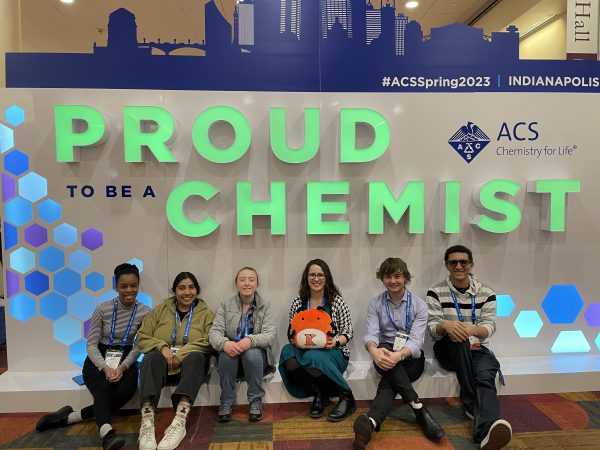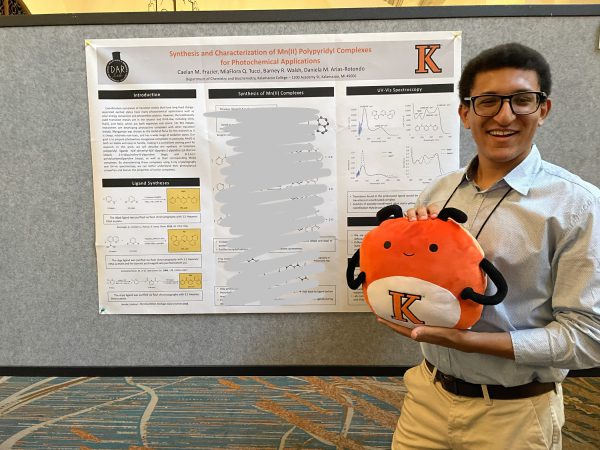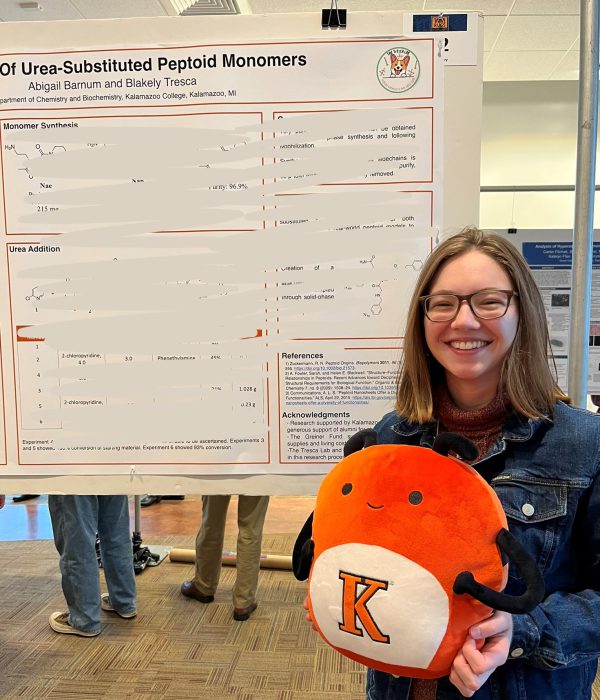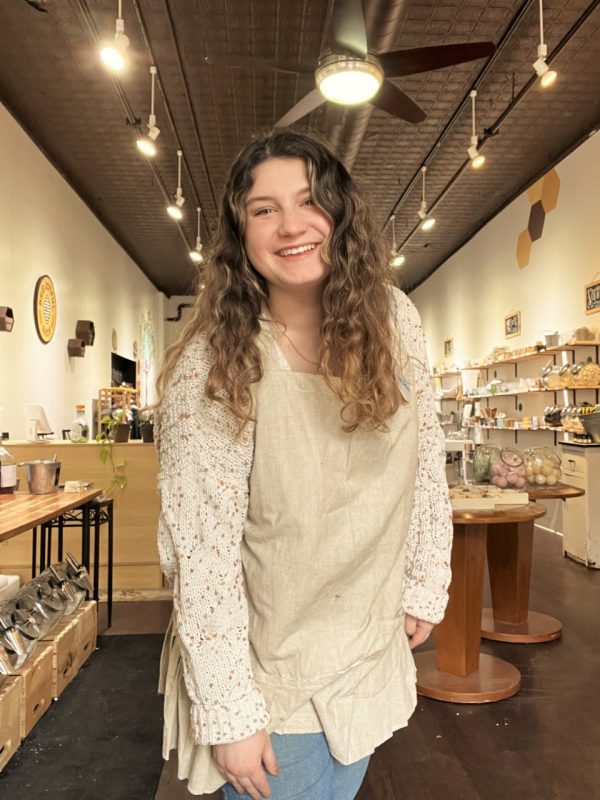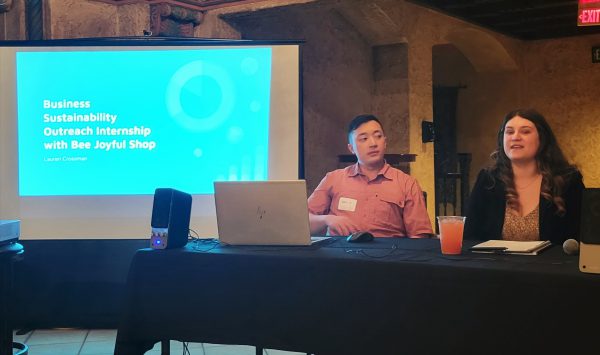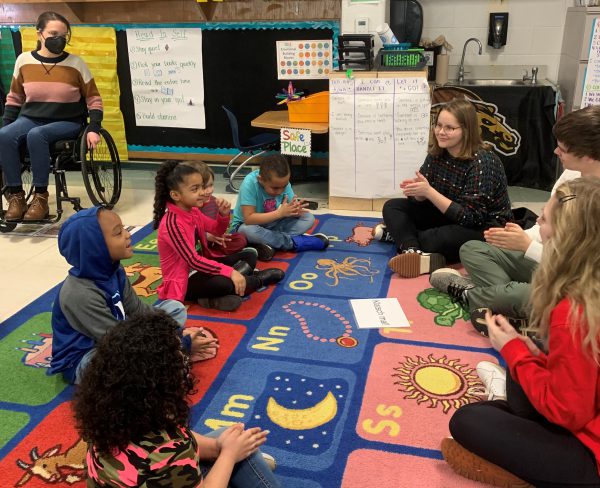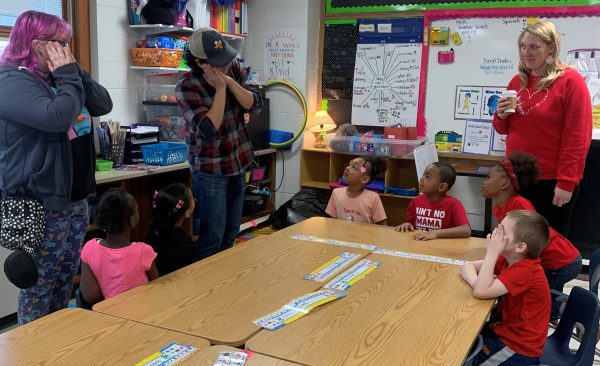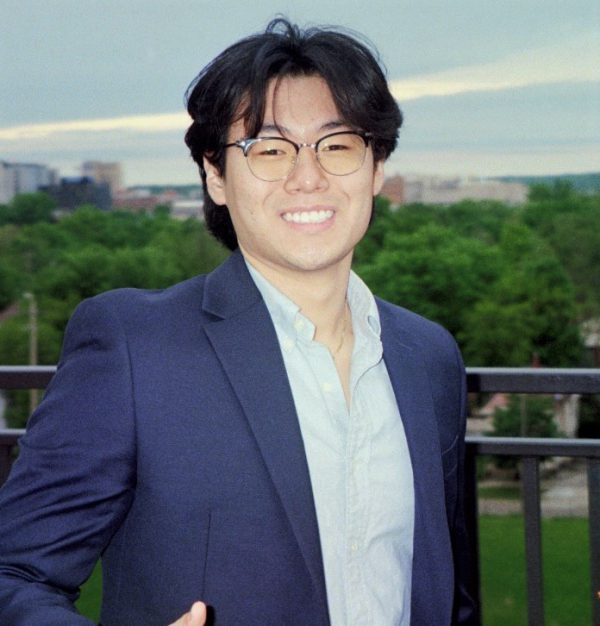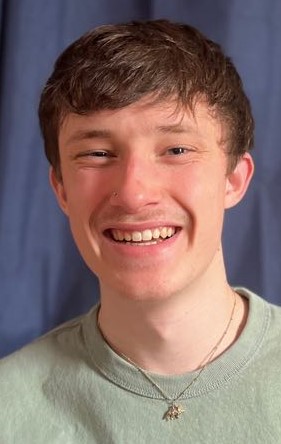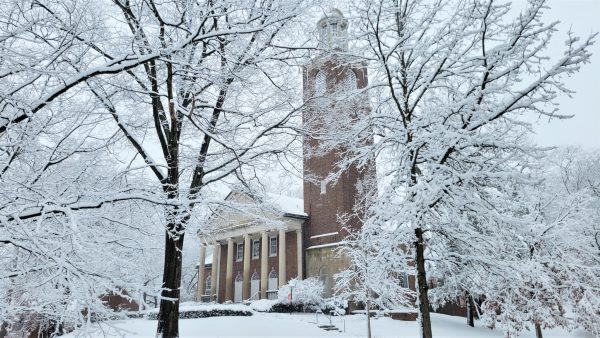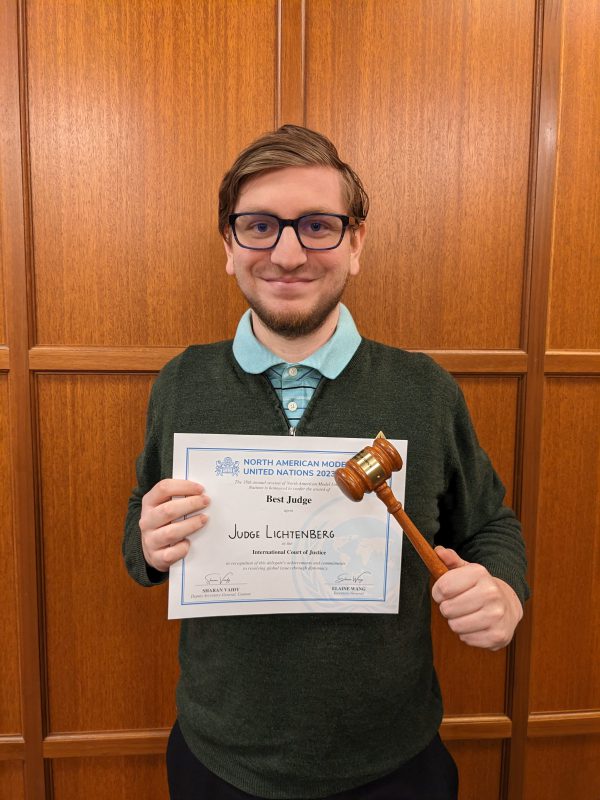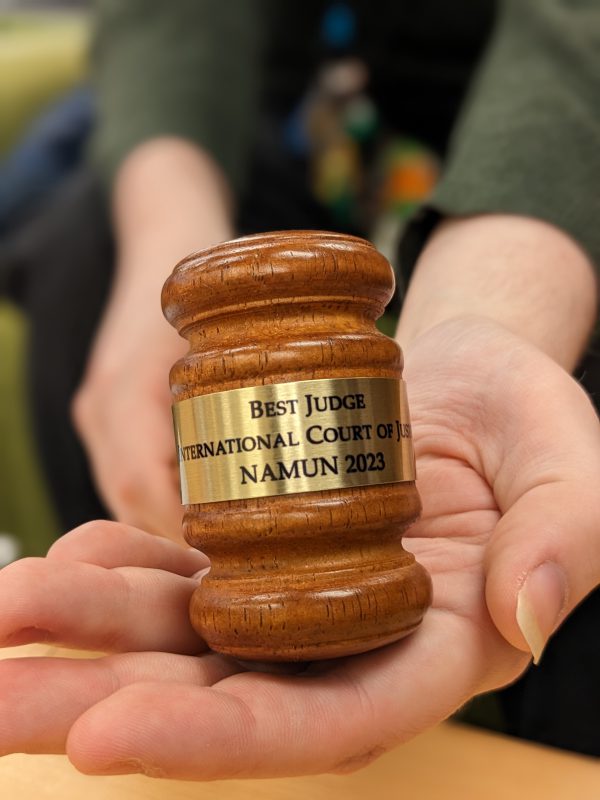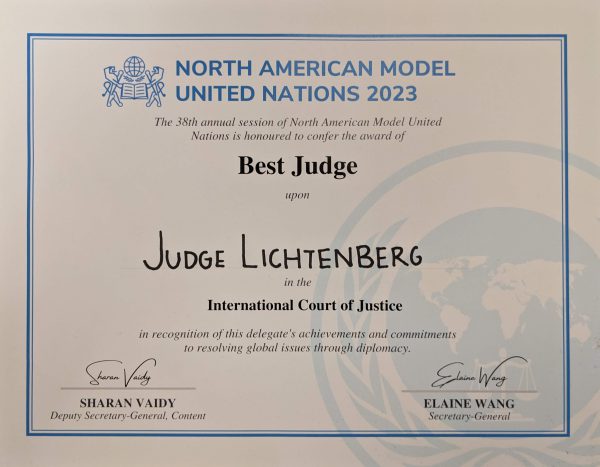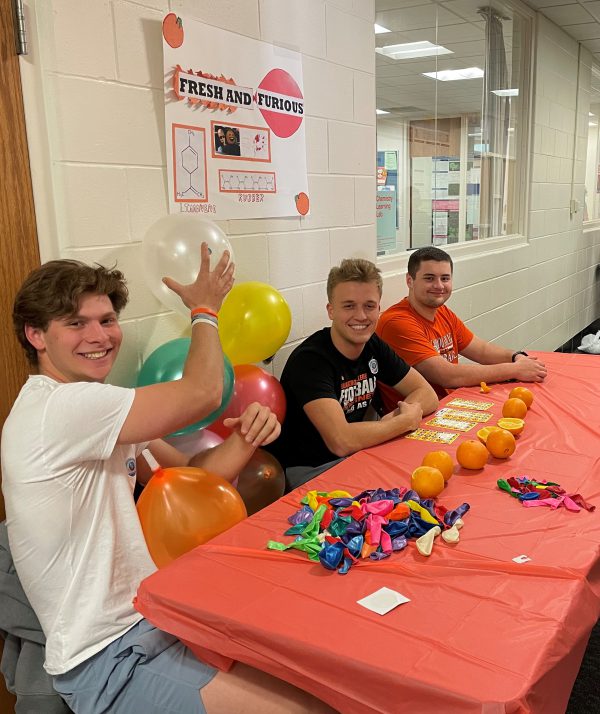

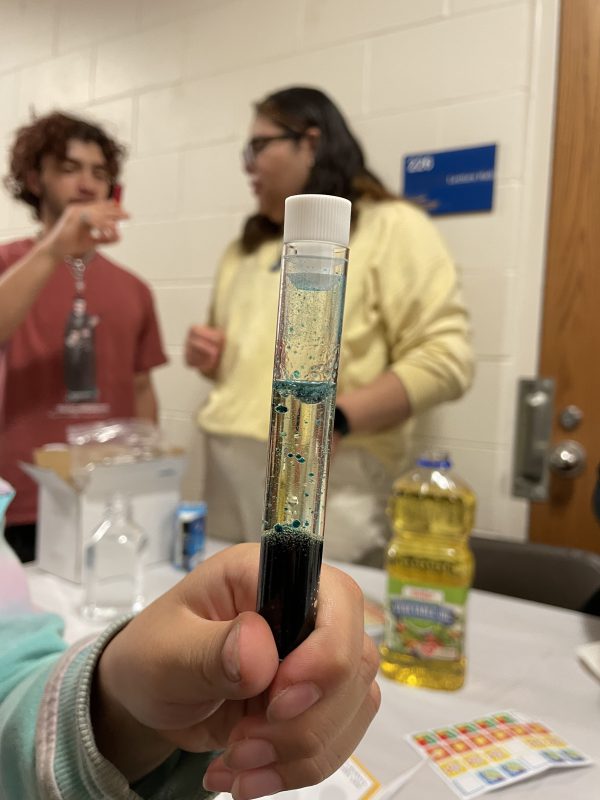
About 160 community members, consisting of kindergartners through 12th graders and their families, came to campus to engage with fun, hands-on experiments at Family Science Night on May 18, hosted by students from the Department of Chemistry and Biochemistry and the Department of Biology at Kalamazoo College.
The Family Science Night “Science Surrounds Us,” conducted at Dow Science Center and supported by funding from the Mary Jane Underwood Stryker Center for Civic Engagement, featured 15 interactive science booths with 39 undergraduate student volunteers and a four-student planning committee, consisting of Crystal Mendoza ’23, Elizabeth Wang ’23, Maxwell Rhames ’25 and Onora Lancaster ’23. The event gave K students the opportunity to practice their science communication skills while nurturing children’s interest in the sciences.
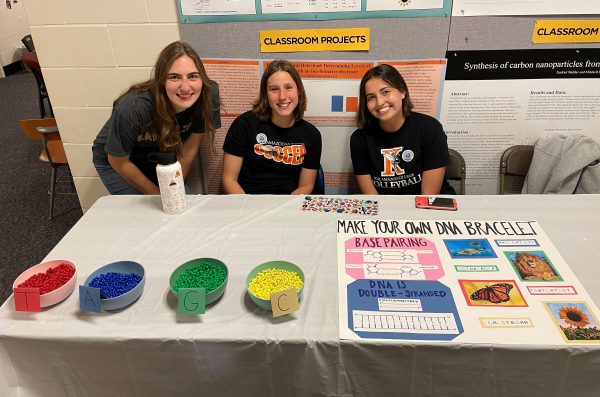
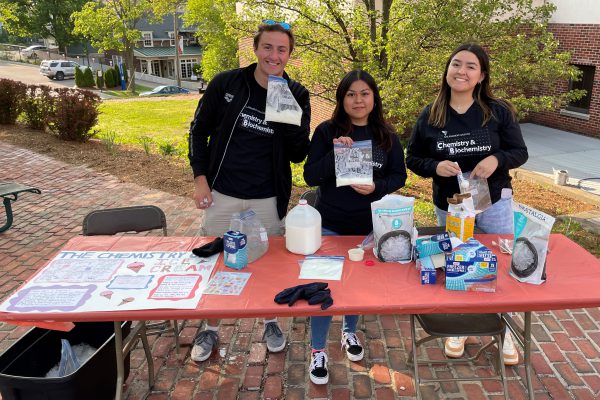
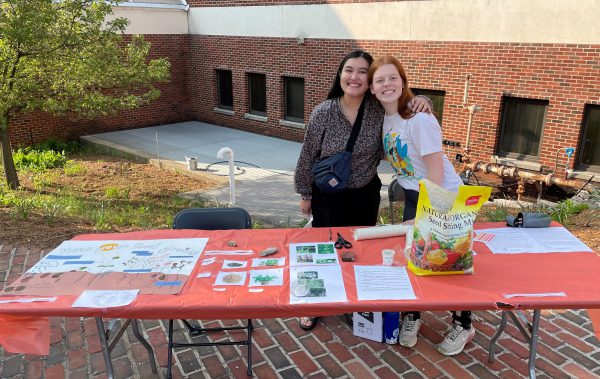
Assistant Professor of Chemistry Josie Mitchell joined the faculty at K last fall and had been thinking since about ways she could connect her students with the community. Science outreach events with K-12 students had been the way she loved doing similar community engagement as a graduate student at the University of Wisconsin-Madison.
“One of the skills I hope my students develop is to be able to communicate the scientific concepts they learn about in class in an exciting and accessible way to the public,” Mitchell said. “As students planned their science booths, we talked about the scientific topic each group hoped to convey and then designed hands-on experiments that K-12 students would do. Ultimately, we all learn better and have more fun when we’re actually doing something versus being told about it.”
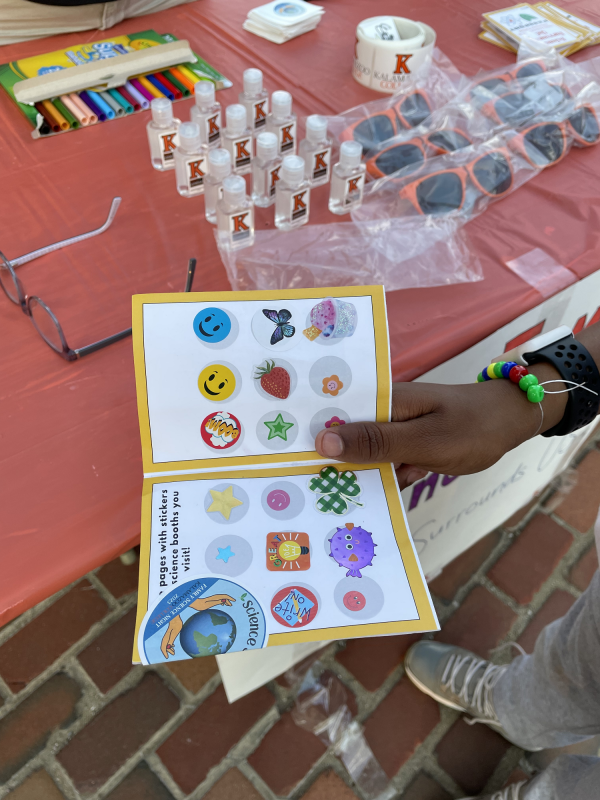
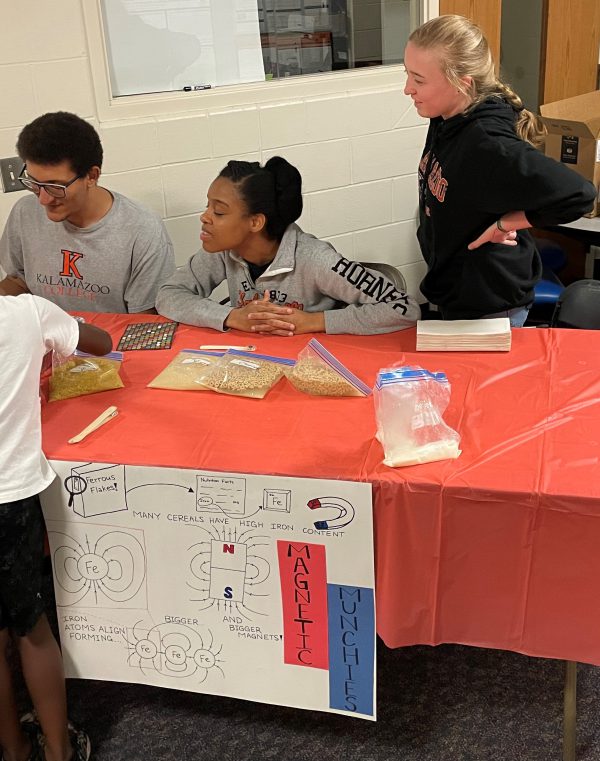
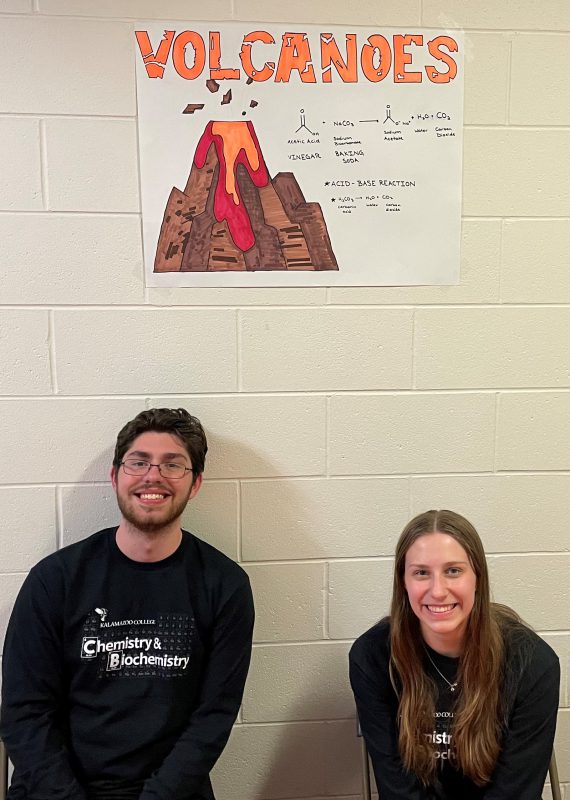
The K students developed ideas using household ingredients that ranged from experiments such as creating miniature volcanoes with baking soda and vinegar, exploring the freezing point of water by making ice cream and learning about the life cycle of plants by planting herbs, to creative activities such as removing the iron from cereal with magnets, extracting DNA from strawberries and investigating rubber polymers by using oranges to pop balloons.
“The planning committee and I worked together with groups to hone their scientific concept and think creatively about how students could get their hands wet and learn through experimentation,” Mitchell said. “For example, one group was learning about acids and bases. There is a chemical in red cabbage called anthocyanin that serves as a pH indicator and it will change color depending on how acidic or basic the solution is. K students prepared a red cabbage pH indicator solution and then had K-12 students add it into acidic and basic solutions and observe a color change. Many of the parents would also engage with the science booths, and I believe events like this can bring out the inner child-like curiosity in all of us.”
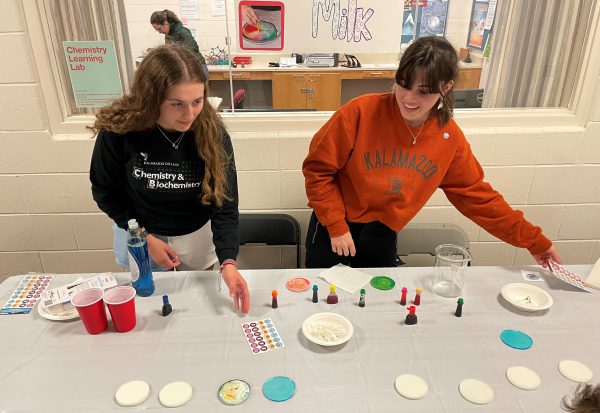

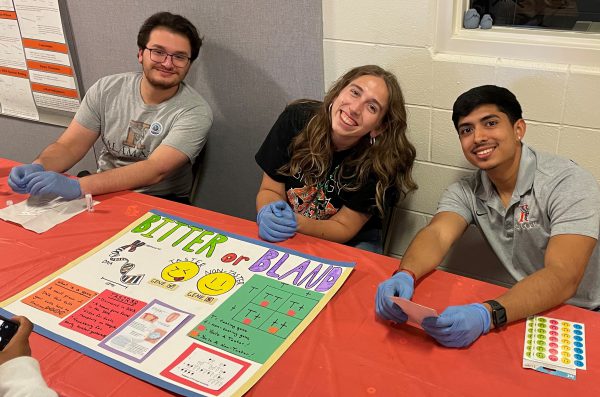
The K community made the night possible with involvement from the planning stages all the way through cleanup after the event.
“We had a lot of help, especially with funding from the Center for Civic Engagement and donated prize items from K Admissions and the K Bookstore,” Mitchell said. “I communicated with (CCE Director) Alison Geist throughout the planning stages, and (Associate Director for Community Partnerships) Teresa Denton tapped into the CCE’s amazing network of local schools and programs to invite community members to the event.”
Student organizations such as Sisters in Science and the College’s chapter of the American Chemical Society also assisted.
“I think our student involvement was the most rewarding part,” Mitchell said. “I’ve already known how amazing our students are, but they went above and beyond to make this event possible. I wanted to start smaller and more focused this year to see how it went, and next year I would love to invite other K students from science, technology, engineering and math (STEM) disciplines to host a booth.”
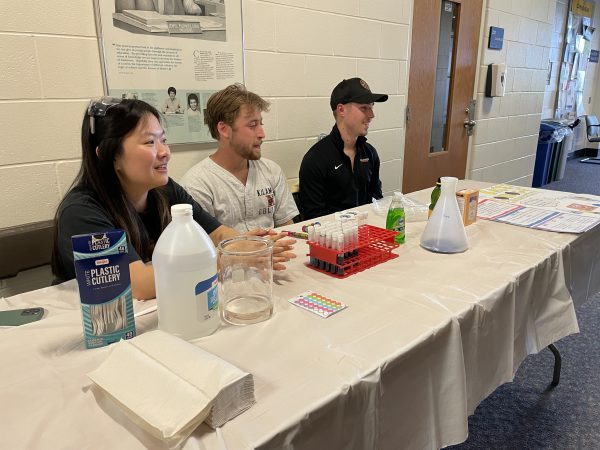

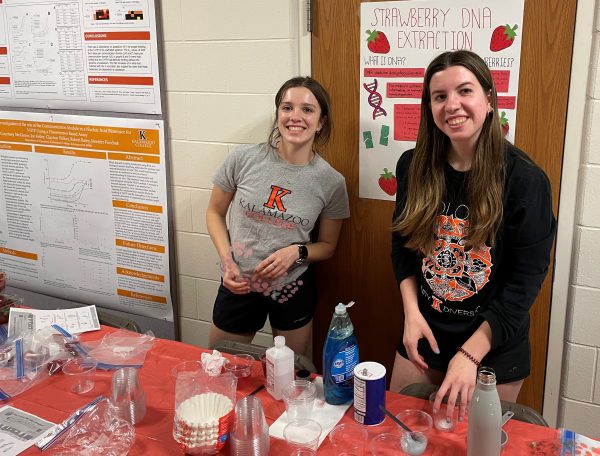
Family Science Night Experiments
- Magnetic Munchies: extracting iron content in cereal using magnets
- Fold It: exploring protein folding using a computer program and origami
- Dancing Drawings: learning about density by watching dry erase drawings float
- Butterfly Wings: creating colorful butterflies using coffee filter paper chromatography
- Mini Volcanoes: investigating acid/base chemistry with baking soda and vinegar
- Strawberry DNA: extracting DNA from strawberries
- Ice Cream: exploring the freezing-point of water by making ice cream
- The Lifecycle of Plants: planting herb seeds and taking them home to watch them grow
- Magic Milk: investigating polarity of molecules using milk, food coloring and detergent
- Lava Lamps: exploring density using oil, water and Alka-Seltzer to make lava lamps
- Oranges and Balloons: investigating rubber polymers using oranges to pop balloons
- Bitter or Bland: exploring the genetics of taste inheritance using a PTC test
- DNA Bracelets: making DNA bracelets using the DNA sequence from various animals
- Acid or Base: testing the pH of various household items using cabbage water as a pH indicator
- Spies in Disguise, Invisible Ink: learning about acid/base chemistry by writing hidden messages
Volunteer Feedback
- “I had so much fun running this booth and it was fun to be able to teach kids about chemistry. I feel like everything was running smoothly with some rush of people, but it was manageable.”
- “This was a wonderful time! I heard phenomenal things from parents as they came out!”
- “I had so much fun and would love to do it again! I loved seeing all of their reactions to our volcanoes!”
Parent Feedback
“The Family Science Night was absolutely wonderful. My children had the best time! My son is very interested in science, but my daughter has approached it more cautiously, although last night really made her more interested in it so I am grateful to you all!”

